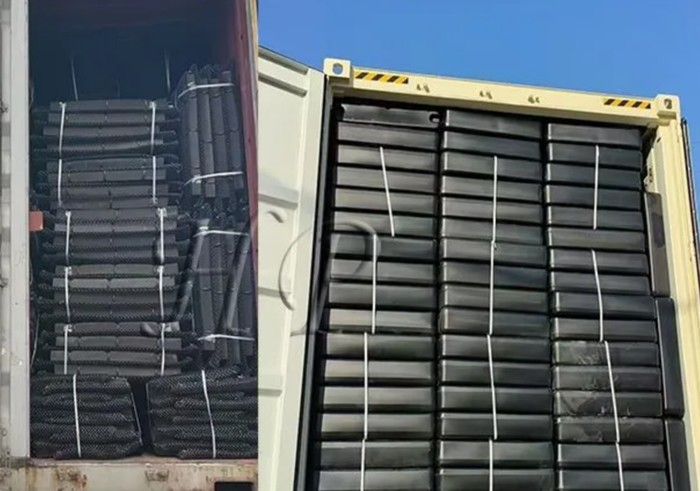
There’s something deeply satisfying about watching oysters thrive in their little underwater homes, nestled snugly in an oyster basket or oyster cage. Whether you’re a seasoned farmer or just dipping your toes into aquaculture, picking the right gear can make all the difference. The wrong choice might leave you with sluggish growth, broken shells, or worse—escaped oysters making a break for freedom.
But don’t worry, we’re here to break it all down. From mesh sizes to durability, floatation to predator protection, let’s dive into what makes the perfect oyster basket or oyster cage for your farm.
Oyster Baskets: The Flexible Choice
When it comes to versatility, oyster baskets are hard to beat. These lightweight, often stackable containers are perfect for smaller operations or farms that need to move their oysters around frequently. Made from durable plastic mesh, they allow water to flow freely, ensuring your oysters get all the nutrients they need without sitting in stagnant water.
One of the biggest perks of an oyster basket is how easy they are to handle. You can lift them in and out of the water with minimal effort, making maintenance and harvesting a breeze. Plus, their design helps protect young oysters from predators like crabs and starfish, giving them a safe space to grow.
But not all oyster baskets are created equal. Some have finer mesh to keep out tiny predators, while others feature larger gaps for better water flow in high-growth areas. If you’re farming in rougher waters, you’ll want a sturdier model with reinforced edges to prevent wear and tear.
Oyster Cages: The Heavy-Duty Option
If you’re dealing with stronger currents or larger-scale farming, an oyster cage might be your best bet. These rugged structures are built to withstand harsh conditions, keeping your oysters secure even in turbulent waters. Unlike oyster baskets, cages often feature metal frames or thicker plastic, making them ideal for deep-water setups.
The biggest advantage of an oyster cage is its durability. Many models come with locking mechanisms to keep curious predators out, and their rigid structure prevents collapse under heavy wave action. Some even include adjustable buoyancy systems, allowing you to raise or lower them depending on tidal conditions.
Of course, oyster cages do have their drawbacks. They’re heavier, which can make handling them more labor-intensive. And if you’re not careful with maintenance, rust or corrosion can become an issue over time. Still, for farms in exposed locations, the trade-off is often worth it.

Mesh Matters: Finding the Right Fit
Whether you go with an oyster basket or oyster cage, the mesh size is crucial. Too small, and water flow gets restricted, slowing growth. Too large, and predators (or even baby oysters) can slip right through.
For spat (baby oysters), a fine mesh (around 4-6mm) is ideal. It keeps out tiny threats while still allowing plenty of water exchange. As oysters grow, you can switch to a larger mesh (10-12mm) to boost circulation and reduce fouling. Some farmers even use multi-stage systems, transferring oysters from tight-mesh oyster baskets to more open oyster cages as they mature.
Another thing to consider? Biofouling. Algae, barnacles, and other hitchhikers love clinging to mesh, which can block water flow. Look for anti-fouling coatings or designs that make cleaning easier—your future self will thank you.
Floating vs. Bottom-Resting: Where to Place Your Gear
Now that you’ve picked your oyster basket or oyster cage, where should you put it? The answer depends on your farm’s environment and goals.
Floating systems keep your oysters suspended in the water column, giving them constant access to food-rich currents. They’re great for growth speed but may require more maintenance to prevent drifting or entanglement. Many oyster baskets work well in floating setups, especially when secured to longlines or rafts.
Bottom-resting systems, on the other hand, sit directly on the seabed. This can be a good option for protecting oysters from strong winds or waves, but it also means dealing with more sediment and potential smothering. Oyster cages with sturdy frames tend to perform better here, as they resist sinking into soft mud.
Some farmers even mix and match—using floating oyster baskets for early growth stages before transferring mature oysters to bottom oyster cages for final fattening.
Predator-Proofing: Keeping Your Oysters Safe
Nothing’s worse than checking your farm only to find half your crop missing. Crabs, starfish, and even certain fish see your oysters as an all-you-can-eat buffet. Luckily, the right oyster basket or oyster cage can help keep them at bay.
For oyster baskets, look for tightly woven mesh with reinforced edges—many predators are experts at prying open weak spots. Some models even come with locking lids for extra security.
Oyster cages, with their rigid frames, naturally offer more protection. But if you’re in crab-heavy waters, consider adding extra barriers like weighted bases or predator skirts (extensions that block digging).
Regular inspections are key, too. A small hole today could mean a big loss tomorrow.
Longevity & Maintenance: Making Your Gear Last
Saltwater is tough on equipment, so investing in durable materials pays off. High-density polyethylene (HDPE) is a popular choice for oyster baskets, resisting UV damage and corrosion. For oyster cages, galvanized or powder-coated metal frames add years of life.
Routine cleaning helps, too. Hose down your oyster baskets and oyster cages regularly to prevent buildup, and check for weak spots before each deployment. Storing them properly during off-seasons also extends their lifespan.
Final Thoughts
At the end of the day, the best oyster basket or oyster cage depends on your specific setup. Small-scale farmers might love the flexibility of oyster baskets, while large operations could benefit from the ruggedness of oyster cages.
Think about your water conditions, predator risks, and growth goals—then pick the gear that fits. After all, happy oysters mean a thriving farm, and that’s something to shell-ebrate!


